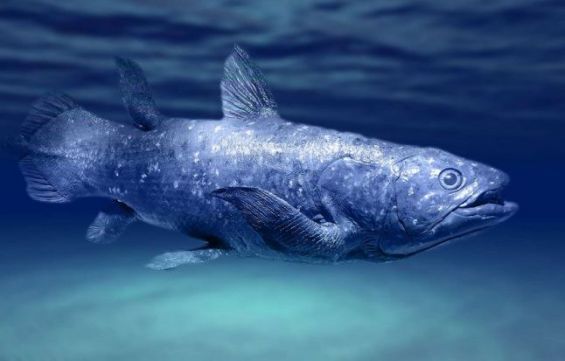A crushed ossified lung of an enormous marine coelacanth has been unearthed by researchers from phosphate deposits in Oued Zem, Morocco. According to the study, published by peer-reviewed journal Cretaceous Research, this is the «first occurrence of coelacanths in the phosphate deposits of North Africa».
The fossil, plastered and covered with a layer of lacquer, which caused the bones to turn brown, was found next to a pterodactyl, proving that the giant coelacanth lived during the Cretaceous period. The large lung size suggests that the ancient fish had an estimated total body length of between 3.65 m and 5.52 m significantly larger than modern coelacanths (2 m).

«We only had a single, albeit massive lung so our conclusions required some quite complex calculations», said Professor David Martill, a paleontologist in the School of the Environment, Geography and Geosciences at the University of Portsmouth.
«It was astonishing to deduce that this particular fish was enormous — quite a bit longer than the length of a stand-up paddleboard and likely the largest coelacanth ever discovered», he added.
Coelacanths are a group of primitive deep-dwelling fishes closely related to tetrapods, four-membered vertebrates, including amphibians, mammals, and reptiles. They were thought to have been extinct for 66 million years, until the accidental capture of a living specimen by a South African fisherman in 1938.
During the Cretaceous period, they were only known by two families, the Latimeriidae, which have survived until now and the Mawsoniidae, which went extinct at the end of the Cretaceous era. The newly discovered specimen belongs to the latter family and is the last specimen of coelacanths before their pseudo-extinction 66 million years ago.




 chargement...
chargement...















